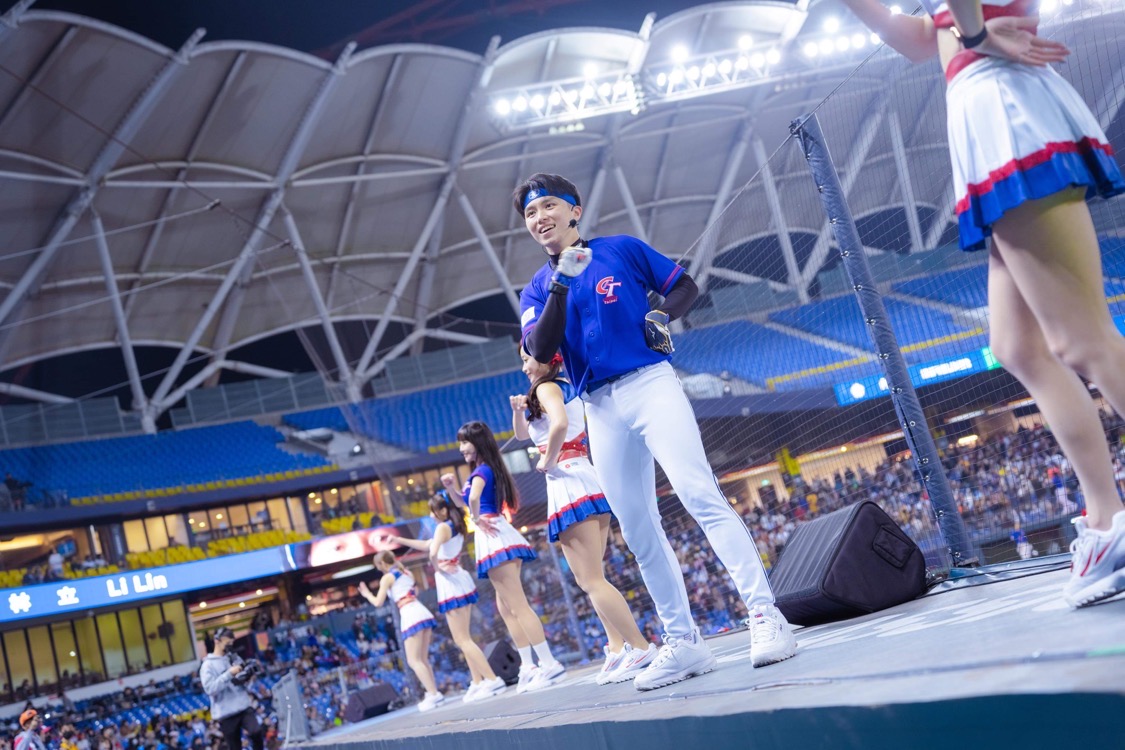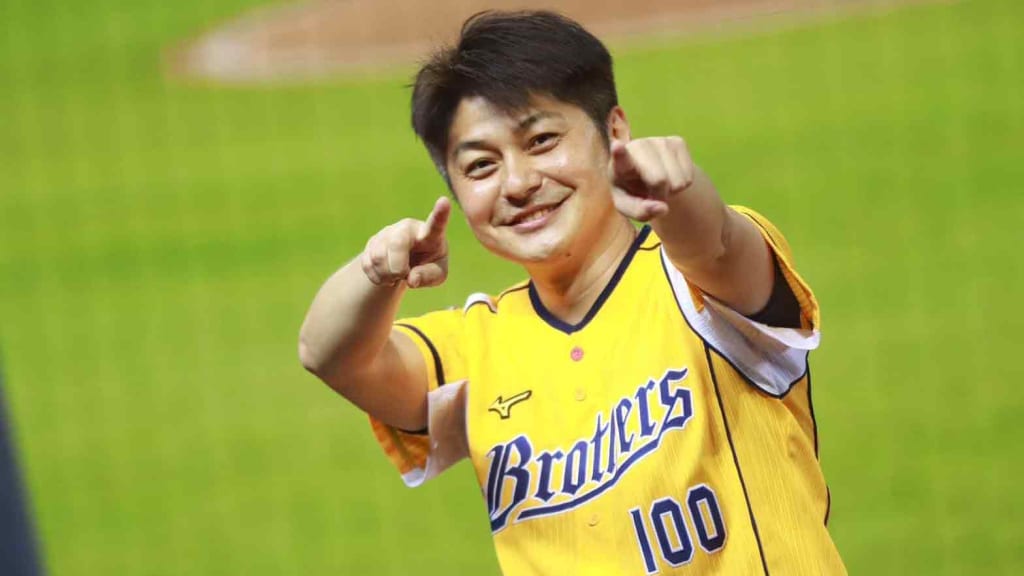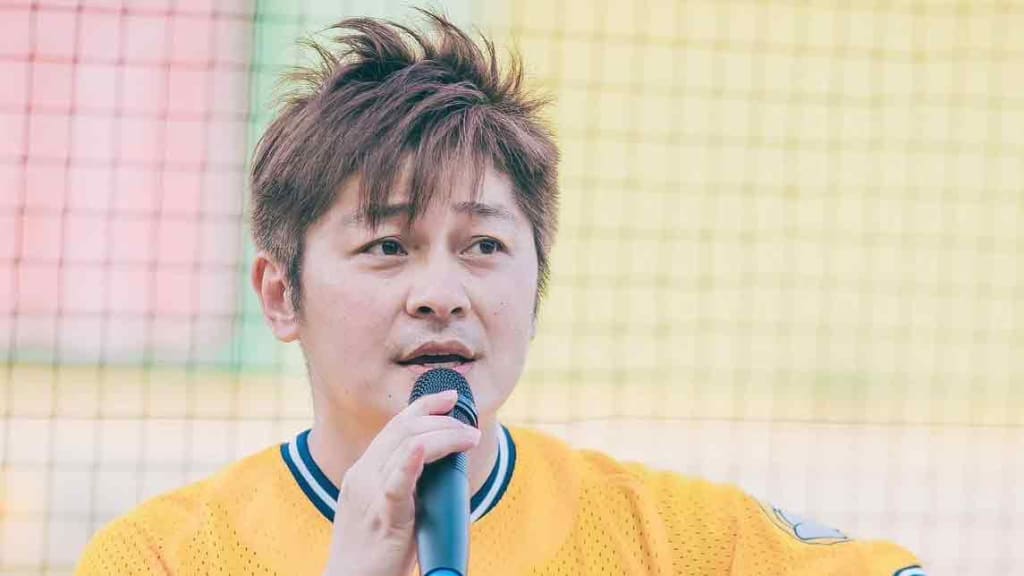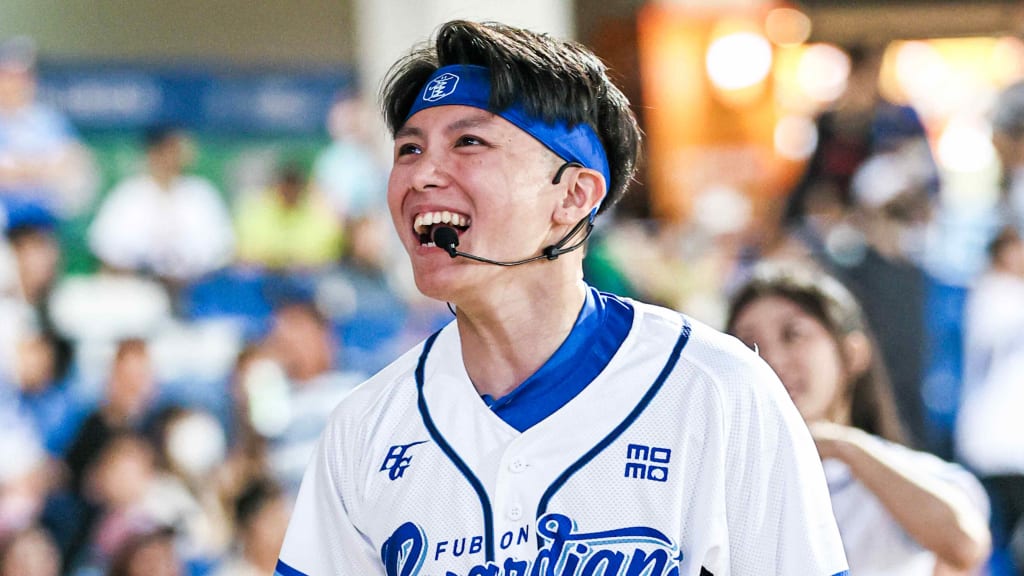Drew Gagnon can vividly recall the first time he truly felt the impact of Taiwan’s in-stadium experience.
The former Mets reliever was making his fourth outing with the Wei Chuan Dragons of the Chinese Professional Baseball League on April 24, 2021. He entered his start in Taichung City against CTBC Brothers believing he could handle the environment around him. But as he prepared to face the first opposing batter, the atmosphere in the stands of Taichung Intercontinental Baseball Stadium prompted one distinct thought.
“Holy crap.”
Echoes roared across every inch of the building. An endless wave of electronic music pulsated through the in-house speakers. A squad of cheerleaders danced in the crowd and on top of dugouts from the first out to the last, led by cheer captains on microphones guiding fans through individual chants that were bellowed for every single hitter Gagnon faced.
“I couldn't even think,” Gagnon said. “In bullpens, I had screaming and music going on to get used to it. I would listen to music loud, I would have guys talk loud. Usually I like silence in the bullpen, but now the more noise you can make is better for me because it's just something you have to deal with out there.”
That wasn’t always the case in the CPBL. Early iterations of this nonstop in-stadium party, a phenomenon the rest of the baseball world only caught a glimpse of in that same venue during the 2023 World Baseball Classic, failed to resonate. Later attempts gathered initial steam but were a far cry from the spectacle seen today.
To get to where they are now, cheer squads in baseball-crazed Taiwan needed to do more than just exist in the periphery of fans’ attention span. They had to become part of the culture. And after years of intense effort both at the stadium and away from it, CPBL cheerleading has done just that, transforming from a much-needed, yet ill-fated morale booster into a baseball sensation that has in some ways eclipsed the popularity of the sport itself.
It’s an outcome few would’ve expected when cheerleaders were added to the CPBL in the late 2000s. While baseball has no shortage of fanfare in a place that has glorified the game since it was first introduced in the early 1900s, Taiwan’s professional league was by that point on life support.
A string of scandals had brought fan apathy to a crippling low. The Brother Elephants club (now CTBC Brothers) was found to have been fixing games during the 2009 season, just one year after the dMedia T-Rex team was expelled from CPBL for similar wrongdoing. Attendance figures plummeted in what was then a four-team league, while those who did attend games were hardly in the mood for the added hype from cheer squads.
“It was just the wrong timing,” said Zeng Wencheng, a veteran CPBL commentator who helped establish the league in 1989, via translator. “Fans were not engaged. Even the staff that was working at the games was questioning the credibility of every game. The overall atmosphere was pretty bad. I thought the CPBL would not be able to survive.”
Despite cheerleaders struggling to catch on in a league staving off an implosion, one club tried a different approach in 2013.
The Lamigo Monkeys (now Rakuten Monkeys), having played in South Korea the previous year as part of the 2012 Asia Series, were eager to incorporate some of the cheer culture they experienced on the trip. The idea was an experiment of sorts, mixing the cheerleaders and constant flow of dance music seen in South Korea with the trumpets, drums and chanting that Taiwanese fans were accustomed to.

Intriguing as it may have been, those who watched the stumbles of previous cheer squads weren’t exactly bullish on this new attempt avoiding a similar fate.
“When I saw Lamigo Monkeys started doing this modern cheerleading squad, I wasn't surprised,” Wencheng said. “But I've seen this in the past. It didn't work. I was skeptical.”
This doubt seemed well founded at first. A lack of organization and a reliance upon volunteers made initial momentum tough to come by for this new brand of baseball cheerleading. Yet the popularity wouldn’t remain stagnant for long.
As the number of volunteers grew while more fans filed through the gates for Lamigo’s nightly baseball festivities, nobody was shrugging off the experiment anymore. The Monkeys’ attendance numbers were on the rise, and clubs could no longer afford to deny the impact of cheerleading squads. By 2016, each member of the CPBL boasted one of their own. Eventually, former volunteer cheerleaders like Kenta Wu with CTBC Brothers were being asked to cheer full time.
“The cheerleading culture took off at that point,” Wu said via translator. “The club basically asked me, ‘Hey, in addition to being a cheerleader, can you become the lead for the cheerleading squad?’”

These cheer captains, a title Wu has held with CTBC Brothers since 2016, quickly became more than just the head of their respective group. For all intents and purposes, captains ensure their squad spends every night making as much of an impact on the game as the players themselves.
It’s a duty that requires more effort than just what fans see on a nightly basis. Emceeing ceremonial first pitches and hosting postgame celebrations with the winning team’s nightly MVP are typical aspects of a captain’s role. But so is arriving at the stadium well before first pitch in order to analyze the team’s roster for a given game and determine what music and chants will be used by the cheer squad that night.
Said chants aren’t a set of three or four choruses on rotation throughout the game, but are instead uniquely designed by cheer captains for every single player, purposefully created to match each one’s hitting profile. Chants for speedy contact hitters are often light and quick, while power hitters stride to the plate as the crowd yells rallying cries much more thunderous in nature.

Cheer captains don’t only have to design the music and chorus for each of these chants fast enough to be ready for every player soon after they join a given team, they also must write chants catchy enough for an entire stadium of fans to grasp instantly. After all, a cheer squad's job isn't complete unless it has supporters constantly clamoring at full force from the first pitch to the last.
The endeavor may sound exhausting even on paper, but it’s still carried out on a nightly basis. Captains and their squads power through whatever fatigue they encounter, maintaining the belief that their team’s fans deserve nothing short of never-ending enthusiasm.
“Think of it as a phone charging cord,” said Travis, who is entering his seventh season as cheer captain of the Fubon Guardians, via translator. “Fans that come to the game on a weekday, those are the people that are fresh off work, their battery is almost dead. The baseball game itself is the plug. I consider cheerleaders as a charging cord between a phone and the plug.
“That’s why I feel that there's an important role for the cheerleading squad to play every single day -- to make the fans feel that they're recharged.”

Cheer captains go to great lengths to carry out this responsibility, interacting with as many fans as possible during a given game. They open the party to everyone on hand, even if it means warming up to apprehensive attendees and handing them the mic to start a chant. Nothing interferes with doing whatever it takes to get the entire stadium shaking.
Such an intense level of dedication also ensures it’s not just the supporters who thrive off the relentless energy from the stands.
“When you have so many people cheering for you, you want to play better,” Monkeys second baseman and former Red Sox prospect Tzu-Wei Lin said via translator. “You want to have a good at-bat to give back to the crowd. Mentally it does affect me [at the plate], because that drives me to play better.”
While maintaining this constant stream of exuberance is far easier when a cheer squad’s team is winning, the circumstances don’t change on an off-night. No matter what kind of lopsided deficit their club might be facing, the cheerleaders refuse to ease up.
“The crowd keeps going even when the team is losing,” Wu said. “If the crowd is not giving up, if the players are not giving up, why should I give up? That really drives me to make sure that, even when the team is losing, I keep a positive attitude.”

Thanks to cheer squads, attending a CPBL game meant leaving with a smile on your face regardless of the final score. This endlessly euphoric stadium atmosphere eventually began attracting waves of younger fans to games which, combined with measures installed to prevent game-fixing, helped boost annual league attendance to numbers not seen since the mid-1990s.
It was the kind of evidence that erased just about all of the skepticism these cheer squads initially met.
“Even on a regular Tuesday game,” Wencheng said, “you’re going to get at least 4,000 people in the stadium no matter what. For a regular-season game, 4,000 people on a weekday is pretty good. A lot of it is because of the cheerleading squads.”
Not only are cheer squads helping at the gates, they’ve also become far more popular than anybody could have foreseen when first introduced.

The original songs and chants created by cheer captains were suddenly receiving copyrights. Members of cheer squads experienced surges of social media adoration. CPBL cheerleaders were reaching a level of recognition that, per baseball commentator Tainan Josh, went well beyond the stadium stands.
“People always like to joke about it in Taiwan,” Josh said via translator. “When you walk on the street as a normal fan, you're probably more likely to recognize a cheerleader than a player.”
Further proof of the ascension these cheer squads were experiencing arrived ahead of the 2023 World Baseball Classic. While Taiwanese fans may root for different CPBL clubs, Team Chinese Taipei unites the entire territory with a fervor unlike anything seen in pro baseball. And yet, the team’s official roster release took place only after the announcement of which cheerleaders would be representing Taiwan in the tournament.
For those who made the cut, getting the opportunity to cheer on an international stage meant just as much as it did for the players themselves.
“It was a dream come true,” Travis said. “Growing up playing baseball, I had a dream of putting on a national team jersey. I didn't have the chance to do it, but the fact that I got selected to cheer for Chinese Taipei, I felt like I was part of the national team.”
Chinese Taipei's cheer squad becoming a viral sensation throughout the World Baseball Classic only fueled the fandom back home. Yet despite how popular cheerleading has become in Taiwan, this adulation doesn’t come without what some see as drawbacks for the CPBL.
Traditionalists in Taiwan feel as though too much attention is being placed on cheer squads and not enough on the actual teams. Club marketing efforts tend to make cheerleaders the central focus as opposed to players, aiming to drive attendance not through talent on the field but with the entertainment you can see next to it. As a result, several purists believe sizable portions of fans are attending games with little intention of actually watching them.
But while some view this as creating a divided crowd, others see it as an opportunity to grow the game with a new type of audience.
“The introduction of cheerleading basically created an entry point for non-baseball fans to go to the stadium,” Josh said. “You might not know the players, but maybe because you really liked his chant or song, you start getting to know more about the player and that drives you to become a fan.”
Said Lin: “Taiwanese baseball is constantly improving. Having cheerleaders, if that’s one of the ways you can attract more fans into the stadium and get more attention to baseball, that’s not a bad thing.”

Regardless of how one feels about them, that cheer squads are a significant factor in nightly attendance says more than enough about how much they’ve evolved since their earlier days. What was once a disregarded attraction in a league struggling to stay afloat has now become a part of baseball lifestyle in Taiwan, creating an experience few around the game can effectively describe to anyone who has yet to take it in themselves.
Even Gagnon, who now refers to Taiwan as his home away from home, was quick to reiterate the opinion many seem to have about the in-stadium atmosphere -- it needs to be seen to be believed.
“I keep trying to get my wife's family out there, my family out there,” Gagnon said. “Anyone I know to come experience it. On video and TV, it doesn't do it justice.”
